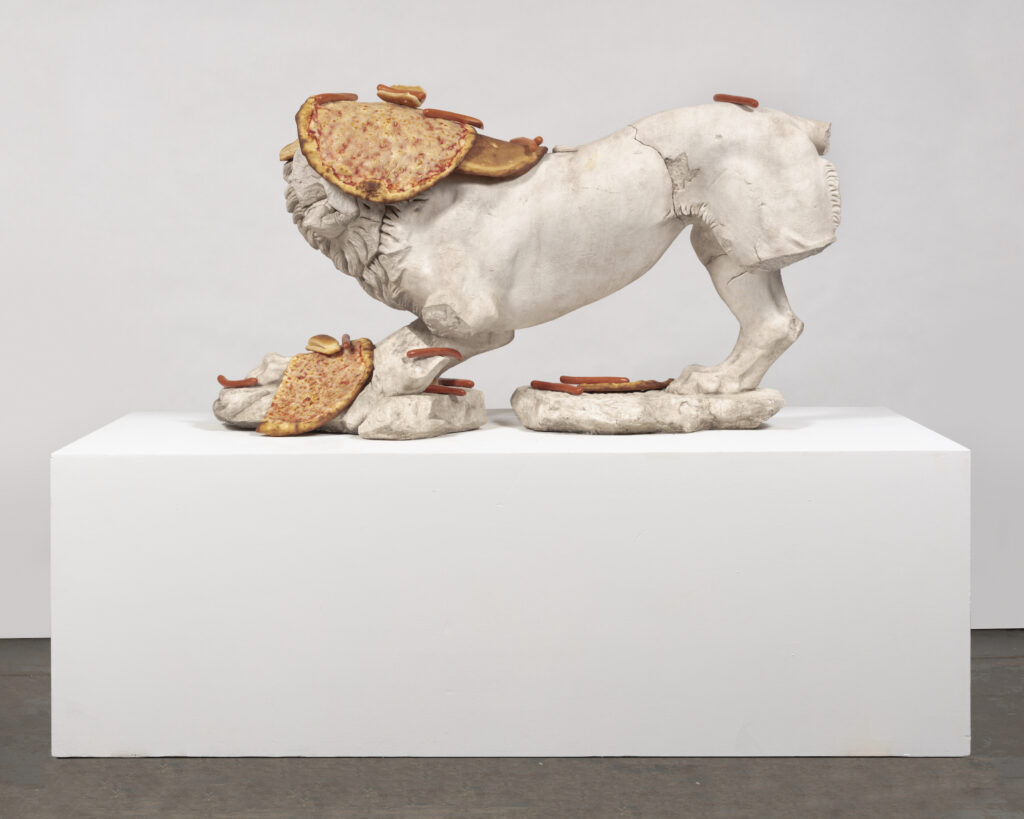It’s with great excitement that we are sharing the news of our first exhibition at our new gallery space in the Catskills. Entitled Altered States, the show opens on Sunday, the 25th of May (Memorial Day Weekend) from 2-6pm. The space has two generous floors, housed in an old Creamery building, purchased over a year ago, and which we have been painstakingly renovating ever since. This Inaugural show is especially heartfelt, combining artists who have been both long – time, and new friends of the gallery, as well as close collaborators of Leo’s late father, Kasper Koenig, whose counsel was instrumental in us deciding to open this space in the small town of Andes, NY.
Using the film by the same name as an inspirational jumping off point, the artists in the exhibition ponder themes of cerebral exploration, hallucinatory gamesmanship, identity, alteration, or even flipping of realities. Some artists take a decidedly more visceral approach, delivering a “shock to the system” that sometimes discreetly engenders behavioral change or a “reset”.
We begin with On Kawara’s date painting December 28, 1980 that has the newsprint ad for the aforementioned film nestled into it’s artist box. Kawara’s date paintings, the series entitled TODAY, posits the calendar as being a human construct, and that the enumeration of time is shaped by cultural perspective and personal experiences. Kawara used very strict methods to complete the TODAY works, inscribing the exact date he created the painting in white letters and numbers on a monochromatic ground, and put a newspaper clipping of his choice commemorating the date. All the paintings in the series had to be completed in a day, or else they were destroyed. Inadvertently one cannot help but contemplate Past, Present and Future while looking at them. In Sherrie Levine’s “lightbulb” we see all of Levine’s undercurrent of wry humor and the idea of the fetish object onto which we project our desires. Here Levine presents the cheeky physical manifestation of a cartoonish illustration long associated with new ideas.
Tony Matelli imbues his hyper-realistic works with an underpinning of absurdity and transience whether it be his mirrors that appear as if to be smudged and written onto by teenaged/ delinquent hands, floral arrangements that balance precariously on delicate petals, or life sized depictions of wandering friends. Matelli’s Weeds are from his ongoing series entitled Abandon. Meticulously crafted out of bronze, he commemorates the lowly plants that survive in the most inhospitable environments, proving impossible to eradicate existing as a rumination on persistence and triumph. With Lion (Pizza) one is perhaps reminded of majestic lions that may be seen in front of great libraries. But the sculpture, with pizza draped like Dali’s famous surrealist melting clocks, confounds perception as if induced from a hallucinatory substance. The incorporation of food is a recurring theme in Matellis work, (both fresh and rotting) often as an allegory for the passing of time. Or, perhaps it is all a humorous take on the Italian tradition of erecting a lion in front of a home that no longer has a mortgage? In Adam McEwan’sGraphite works, ordinary objects such as an industrial step stool, and a roll down gate, project a quiet power. McEwen first sees these sculptures as “sketches” carved out of the very material that one might use to make a sketch. These sculptures seem the product of, and perhaps a gateway to, ( in the case of the Roll Down gate) an alternate universe where atoms are changed and inverted, transforming shiny new things into light-absorbing doppelgangers.
Thomas Schütte’s work frequently explores themes of human vulnerability, power dynamics and societal structures. Beginning with an early preoccupation with architectural forms, Schütte soon progressed to exploring the figure. Schütte’s sculptures now often employ distorted or exaggerated human forms through which Schütte chronicles the protean aspects of the human condition. When speaking of these sculptures, Schütte once said ‘I would rather talk with my hands and through forms and let these creatures live their own lives and tell their own stories,’ he said.
Keenly entwined in mortality and legacy, Ser Serpas’ work is preoccupied with its own resolve in the face of its ossification. Her paintings bring together personal memories and traces of everyday life. She then mashes bits of her life, both real and imagined, into anti portraits while manifesting a practice critiquing and celebrating the value (or lack thereof) of material objects. Lorenzo Amos’portraits are painted with the idea of the subject being proportionate to the act of mark-making. The figure is not necessarily central but intimately enjoined through the surrounding gesture . Amos de-centralizes the body, aiming not to paint flesh but instead to register presence. Figures appear permeable, conditional upon the creative act surrounding it.
The gallery is open Friday through Sunday 12-6pm. For more information please email Andes@leokoenig.com. Or call us at 212.814.5422.
For more information on the artists shown please see the following links:
https://www.palogallery.com/artists/50-lorenzo-amos/overview/
https://www.davidzwirner.com/artists/on-kawara
https://www.davidzwirner.com/artists/sherrie-levine
https://gagosian.com/artists/adam-mcewen/
